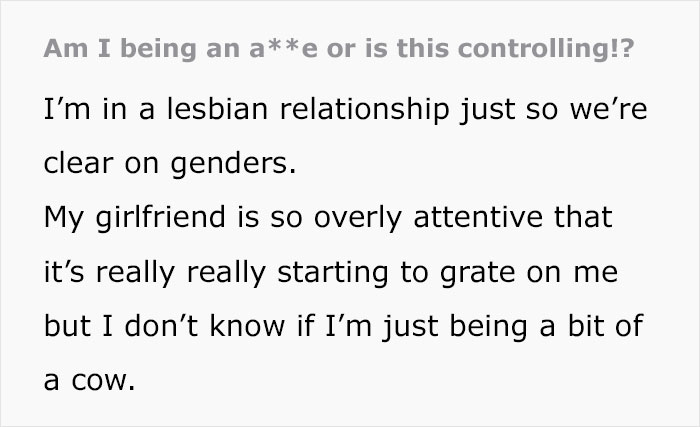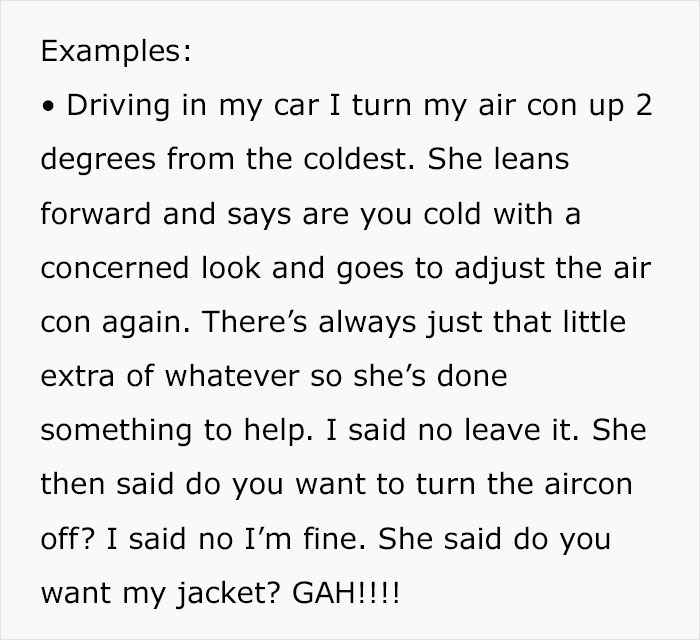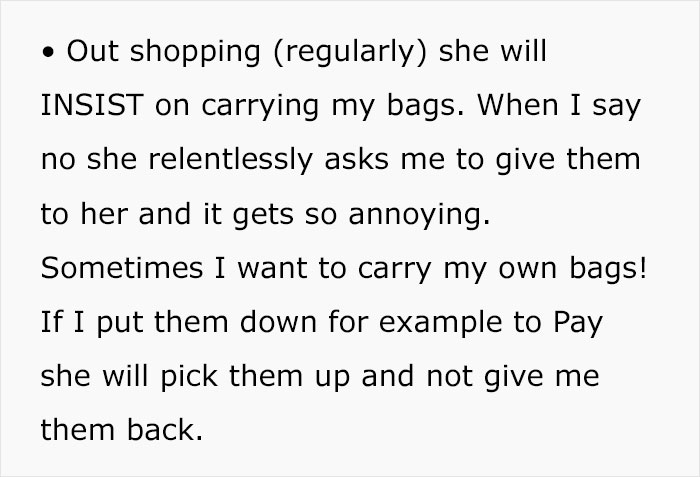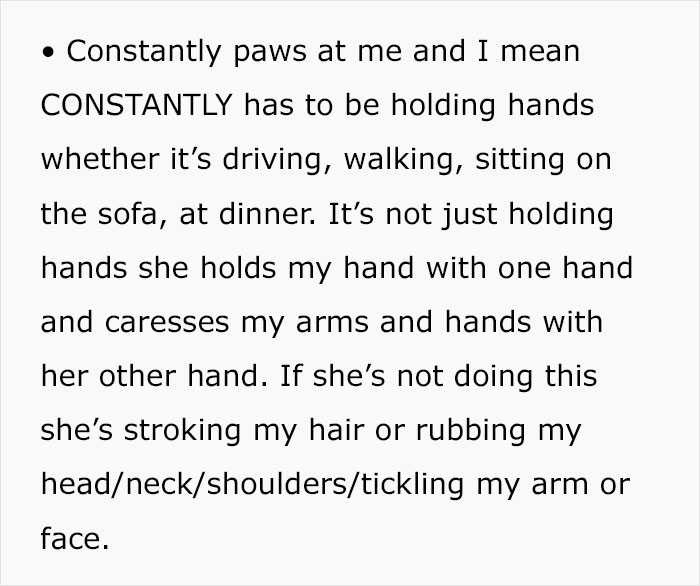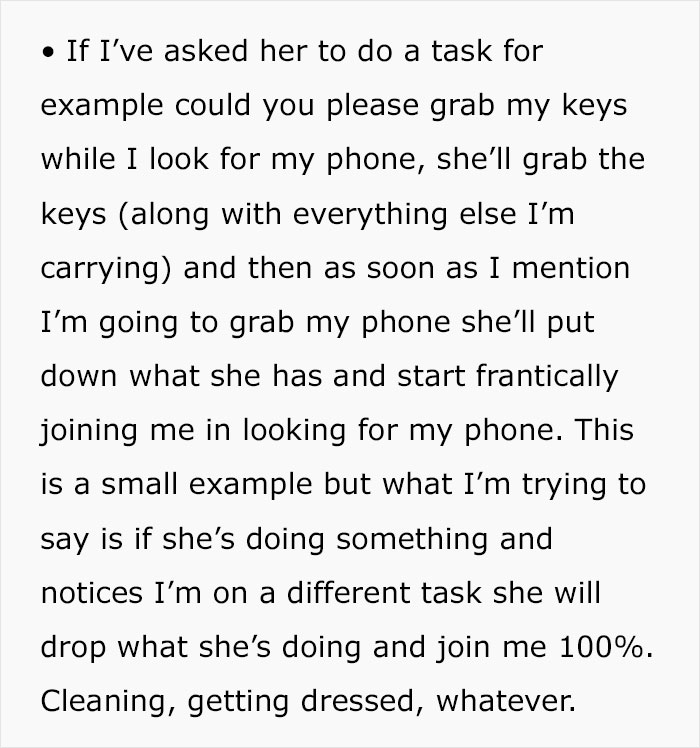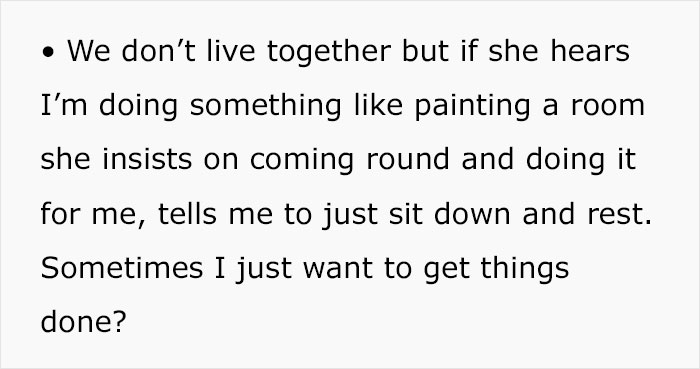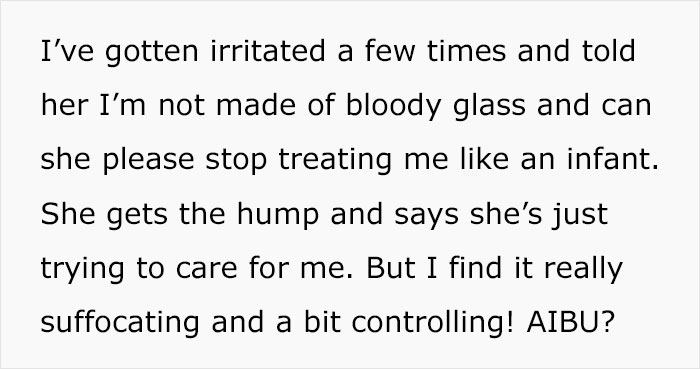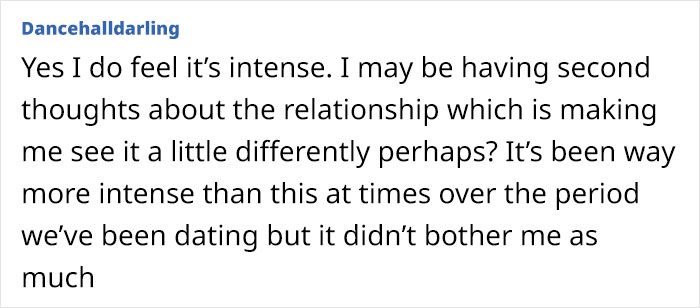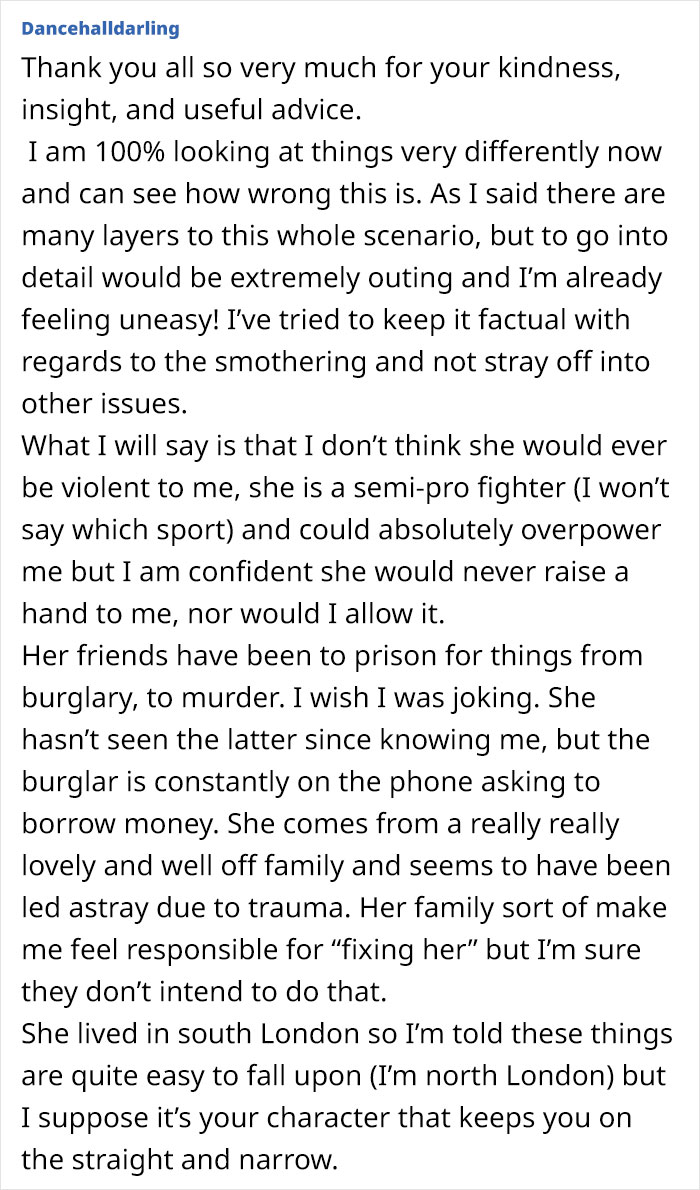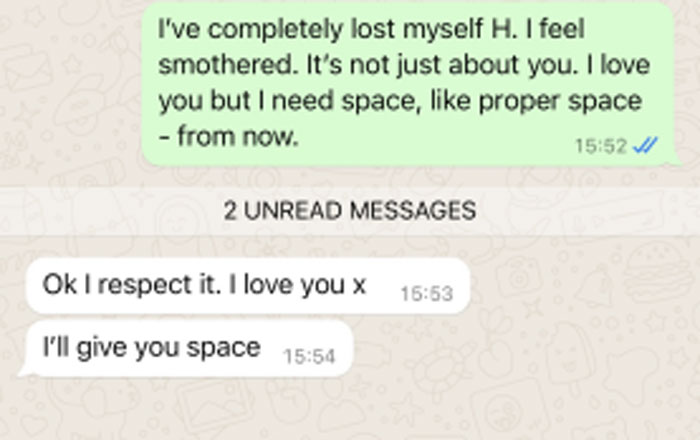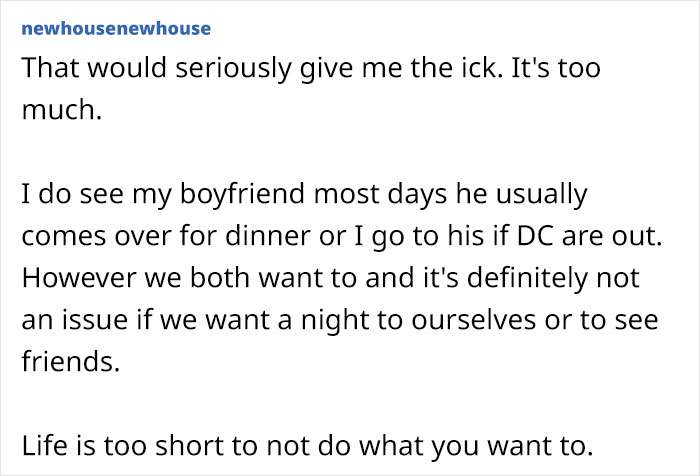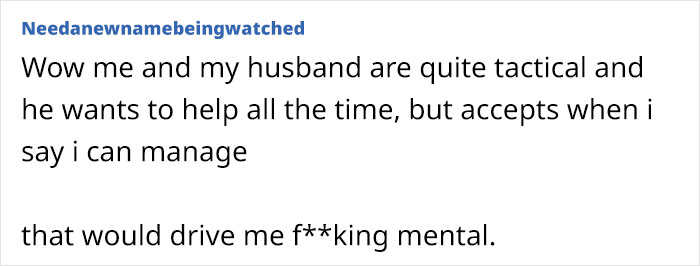A woman shared her experience in an unbalanced relationship where her girlfriend seemed to be trying to control her every move. This constant attention and overcare forced her to seek advice from others. More info: Mumsnet
Annoyed woman asks people if she’s overreacting about her girlfriend being too attentive, shares many points to showcase the extent of the problem
Share icon Image credits: Elijah O’Donnell (not the actual photo)
The woman said her GF’s controlling behavior was starting to grate on her nerves, but she was unsure if she was being unreasonable over her partner’s actions
Share icon Share icon Share icon Share icon Share icon Image credits: fauxels (not the actual photo)
GF treats her like she’s made of glass, is too helpful, insists on carrying her bags, tries to touch her constantly, wants to be around her all the time, and more
Share icon Share icon Share icon Share icon Image credits: RDNE Stock project (not the actual photo)
The agitated poster told netizens that she felt suffocated in the relationship and thought her girlfriend was going overboard
Share icon Share icon Share icon Share icon
After receiving an outpouring of comments, the woman sent her GF a message asking for space and saying she felt smothered, and luckily her partner respected her request
Share icon Share icon Share icon Image credits: Dancehalldarling
Partners need to respect each other’s boundaries and give one another the space to do their own things sometimes
To get a professional’s perspective on this story, Bored Panda interviewed Laurel Roberts-Meese, a licensed marriage and family therapist and the Clinical Director of Laurel Therapy Collective. Her practice offers individual and couples therapy with an emphasis on trauma recovery and LGBT+ affirmative care. Based on what the author shared in her post, Laurel stated it “seems like a clear example of differing attachment styles. While it’s easy to label someone as clingy or smothering, when you look under the surface, there’s likely attachment trauma.” “When someone is insecurely attached, they perceive any space between them and their partner as a threat to the relationship. They can respond to requests for space or autonomy with extreme attempts to keep their partner engaged. This often launches a frustrating pursuer/distancer dynamic. One person wants more togetherness and reassurance, while the other person cares deeply but needs more space and autonomy. Both people dig their heels in and no one ends up happy. Neither partner is wrong, but they’re also never going to agree,” she added. Experts state that it’s important to set boundaries in your relationship and to discuss your needs and wants so that both partners can be mindful of each other. Laurel also mentioned that “couples that have a pronounced difference in attachment style or are engaging in classic pursuer/distancer behavior can really benefit from couples therapy. Mutually agreeing on schedules of closeness and distance is important. Making the problem less personal is also important; neither partner is wrong for wanting more or less time together, but a healthy middle ground needs to be found.” That’s why it’s important to understand that even though the poster found her girlfriend’s actions overwhelming, it doesn’t mean that her partner was a villain. It’s possible that her smothering behavior resulted from feelings of anxiety and a need for constant reassurance. Laurel explained this, stating, “people with attachment trauma can sometimes confuse their own needs for the other person’s. For example, when they are thirsty, they offer their partner a glass of water instead of getting themselves a drink. It’s not intentional, and it can be unlearned over time.” Share icon Image credits: Pavel Danilyuk (not the actual photo) We also contacted Linda Magson, the Director of Sydney Online Counselling and Coaching. She believed that the poster’s girlfriend has an insecure attachment style. She explained that “the need to be liked/loved is a top need that can drive some pretty unhealthy behaviors in friendships and relationships. Also a belief that love is ‘doing’ rather than ‘being’ and a belief that love is conditional – based on doing things for the other. The GF may be so busy giving love that she can’t receive it and misses the cues that it’s not working in the way she wants it to.” Linda shared a few examples of how the insecure attachment style could manifest. She mentioned that “self-esteem and a view of oneself as loveable or unloveable may also be at play here. The GF may fear losing this relationship so she constantly needs to overdo things to ensure it won’t end (though it’s having the opposite effect). A need to be loved and liked all of the time (unrealistic) and perhaps a belief that love is earned rather than unconditional. Idolizing her partner and putting her on a pedestal creates an unequal relationship and unhealthy dynamic – one person is treated as a child (princess) and the other gives away her power.” It’s important for couples to realize each other’s attachment styles and work on communicating better. Linda mentioned a few counseling strategies she would use to help both parties in this relationship. She said, “we would identify the triggers that set off this push-pull dynamic where one person over-compensates and the other under-invests. It is important to identify what the behavior is trying to achieve and find other ways of going about it. We’d practice assertive ways of communicating each person’s needs.” As both Laurel and Linda stated, there isn’t a villain in this story. It’s just that one partner might be feeling insecure, and she’s putting those feelings on the OP. It might be easy to tell the author to dump her GF over these issues, but therapy and honest communication can be healthier alternatives. What do you think the woman should do in this situation? Are you team take-a-hike or team therapy? Let us know in the comments.
Netizens validated the poster’s concerns and told her that her partner’s actions were extreme and that she should probably dump her
Share icon Share icon Share icon Share icon Share icon Share icon Share icon Anyone can write on Bored Panda. Start writing! Follow Bored Panda on Google News! Follow us on Flipboard.com/@boredpanda!

